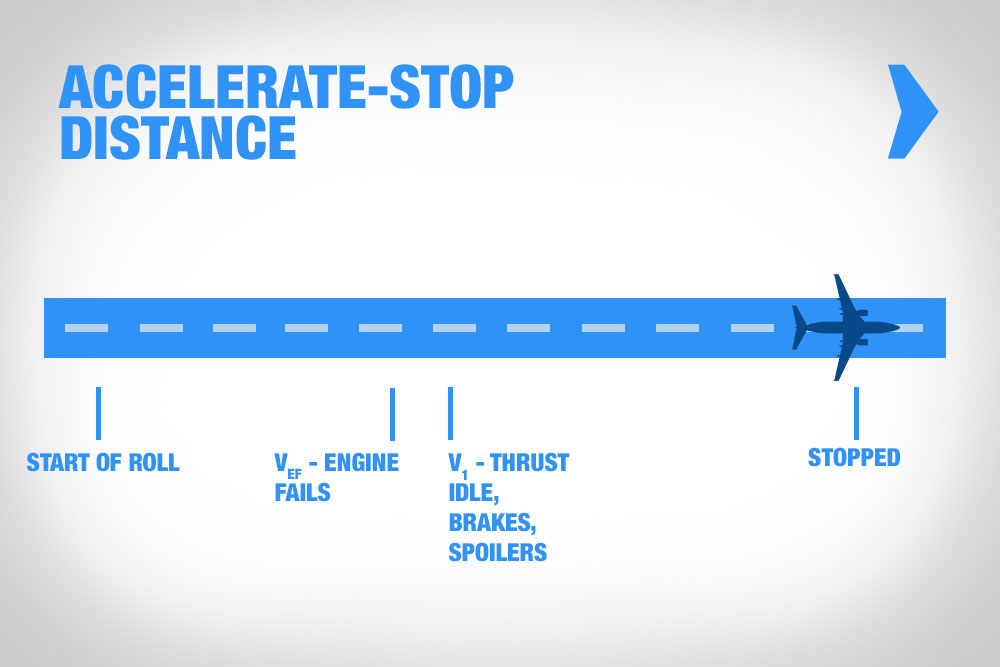Engine Failure On Takeoff: Do You Stop Or Go??
Emirates completes world’s longest nonstop flight
06/03/2016
Could this pilot selfie be real?
07/03/2016How do you handle an engine failure during takeoff in a 737 – or any other large multi-engine jet? The answer usually comes down to a V-speed we don’t use in light aircraft –V1.

V1 – It’s Time To Make A Decision
V1 is often called the “takeoff decision speed”, or the “critical-engine failure recognition speed.” They’re ambiguous terms – but you can distill them down to one simple thought.If you lose an engine after V1, you’ll continue the takeoff.
FAR 1.2 describes V1 as:
V1 means the maximum speed in the takeoff at which the pilot must take the first action (e.g., apply brakes, reduce thrust, deploy speed brakes) to stop the airplane within the accelerate-stop distance. V1also means the minimum speed in the takeoff, following a failure of the critical engine at VEF, at which the pilot can continue the takeoff and achieve the required height above the takeoff surface within the takeoff distance.
Confused yet? You’re not alone. Simply put, V1 is the fastest speed where you can still stop the airplane in your calculated accelerate-stop distance after an engine failure. And, since V1 usually uses a “balanced field,” it’s the slowest speed where you can continue the takeoff after a failure of the critical engine and still make your computed takeoff distance.
What Is “Accelerate-Stop Distance” – And What Is A “Balanced Field?”
Let’s say you lose an engine during your takeoff roll and decide to abort. “Accelerate-stop distance” includes the total distance it takes you to start your takeoff roll, lose an engine, and bring your aircraft to a stop. We’ll refine this further in a minute.

If you decide to continue the takeoff, on the other hand, “accelerate-go distance” is the total distance it will take you to start your takeoff roll, lose an engine, continue the takeoff, and reach 35 feet at V2. V2 is your takeoff safety speed – the speed you’ll initially climb at after an engine failure.

When Does The Engine Fail?
Each of these distances vary with configuration, weight, wind and density altitude. But, speed has a massive effect on each of these distances.
Imagine you’re flying a 737 and you lose your engine at 30 knots during the takeoff roll. You may still have enough thrust out of your remaining engine to keep accelerating and take off, but you’ll chew up a lot of runway. On the other hand, you won’t need much distance to stop the aircraft. Stopping sounds like the safest idea in this case.
Now imagine you’re two knots below rotation speed in the 737 and you lose an engine. You can easily continue the takeoff and climb out without using much additional takeoff distance. However, stopping a 150,000 pound 737 rolling at 130 knots will eat up lots of runway. Continuing the takeoff clearly seems like a better choice here.
Balanced Field Length – Where It Takes The Same Distance To Stop Or Go
V1 usually “balances the field.” V1 identifies an engine failure speed where the distance to abort and the distance to continue the takeoff are the same. That’s called a “balanced field.”

The definitions also use the term “critical-engine.” On many twins, losing one engine hurts performance more than the other. The engine that hurts performance the most is the “critical engine.”
Accelerate-go distance includes the total distance to accelerate from a standing start, lose the critical engine just before V1, recognize the failure as you reach V1, and continue the takeoff to cross 35 feet at your takeoff safety speed (V2).

Accelerate-stop distance includes the total distance to accelerate from a standing start, lose the critical engine just before V1, recognize the engine failure as you hit V1, and stop the airplane using idle thrust, brakes and spoilers.

Notice reverse thrust wasn’t in there? Under FAR Part 25 (which is what the FAA uses to certify transport-category aircraft like the 737), you can’t include reverse thrust when calculating the accelerate-stop distance on a dry runway. You can include reverse thrust when calculating the accelerate-stop distance on a wet runway, however.
So, on a dry runway, you’ll actually be able to stop the airplane in a shorter distance than computed if you have reverse thrust.
How Do You Calculate The Balanced Field Length?
There’s an app for that. Actually, it’s a table. Or the FMS may do it. Either way, someone’s already figured out all of the stop and go distances for engine failures at every speed, flap setting, weight, and density altitude. They’ve figured out where the distances balance, and plotted the associated V1 speeds. Lucky you! All you need to do is look up the speed.
The associated balanced field length also translates to your required runway length. If you compute a 5000 foot balanced field length, you’ll need a runway that’s at least 5000 feet long for takeoff.
The Practical Part – How You Use It During Takeoff
The flying is the fun part, and you’ll hear “V1” called out during the takeoff roll. In fact, many airlines call out “V1” just before they’re actually at V1. The “accelerate-stop” calculations assume you’re applying brakes at V1, so crews call it about 5 knots early so you have time to hear it. Ideally, the “one” in V1 is said right as the airspeed reaches V1. Picky, huh?!?
If an engine fails before you hear V1, or right as you hear V1, you’ll abort the takeoff and will be able to stop the aircraft on the remaining runway.
If an engine fails after you’ve heard the V1 callout, you’ll continue the takeoff and will be able to reach 35 feet AGL in your computed takeoff distance. In fact, most airline procedures have the pilot flying remove their hand from the throttles after they hear “V1” – that way they don’t accidentally try to abort.
Lots Of Calculations For A Split Second Decision
It’s amazing how many calculations go into a multi-engine jet’s takeoff planning. From the first second of ground roll, the crew have a plan for any failure. And often, the decision to abort or continue comes down to one simple speed – V1





